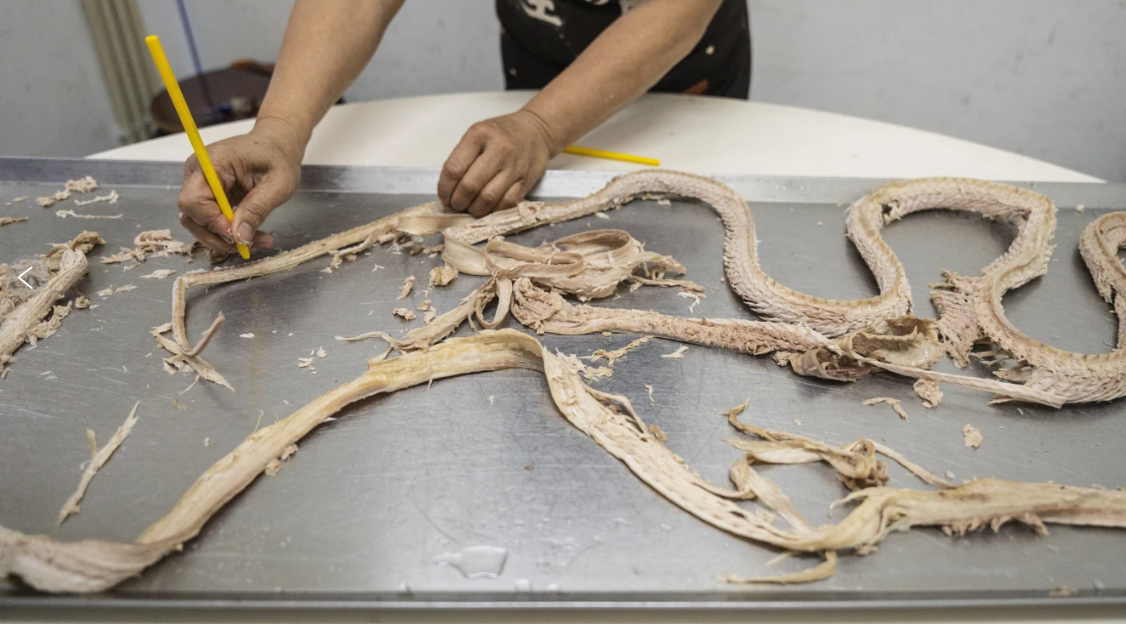As Hong Kong gets ready to usher in the Year of the Snake on Wednesday, Chau Ka-ling effortlessly handles a live serpent, displaying it like a pet in her long-established restaurant. Chau is one of the few remaining practitioners of the city’s traditional snake soup industry, preserving this culinary art. She keeps three live snakes on hand for occasional display in wooden drawers that were once used to store serpents for cooking.
Her restaurant, Shia Wong Hip, founded by her late father in the 1960s, used to slaughter live snakes for its signature dishes. The name “Shia Wong” translates to “Snake King” in Cantonese. Under her father’s guidance, Chau learned how to catch and prepare snakes for soup, eventually earning the title of the city’s “Snake Queen.” A photograph on the wall captures her remarkable feat in 1997, when she successfully caught a venomous 2-meter-long king cobra at a marine police office in rural Hong Kong, at the authorities’ request. However, the practice of making snake soup is gradually fading away in the city.
However, following the 2003 SARS outbreak, which claimed 299 lives in Hong Kong, Chau’s restaurant, like many other remaining snake soup shops in the city, transitioned to using frozen snake meat sourced from Southeast Asia. The outbreak, which was linked to wild animals, prompted many to change their practices for health and safety reasons.
Even with the switch to frozen snake meat, making snake soup remains a time-consuming process. The defrosted snake meat is boiled for at least two hours to achieve the right level of tenderness. Once cooled, Chau carefully debones the meat using a sharpened chopstick and then shreds it by hand into thin strips.
The bones of the snake are then simmered with chicken and pork bones for at least six hours to create the soup base. Afterward, the broth is cooked with snake meat, shredded chicken, ham, fungus, and mandarin orange peel, and thickened with starch.
When the soup is served, it’s typically garnished with lemon leaves and crispy chips.
Snake meat, which resembles chicken in texture after being cooked, is high in protein and low in fat.
During the winter months, Chau can sell up to 800 bowls of snake soup daily, with prices ranging from $7 to $11. However, this number significantly drops to 100 or fewer during the summer, as the soup becomes less popular.
Many snake soup shops have shut down following the COVID-19 pandemic, and with older chefs retiring, only around 20 such shops remain in operation. Despite this, Chau is committed to keeping her restaurant running as long as possible, although she is not optimistic about the future of the industry.
She mentioned that even if her nephews expressed interest in joining the family business, she would advise them to pursue a career in making desserts instead. “This is not a money-making industry, and I don’t think young people would want to get into it,” she said.













